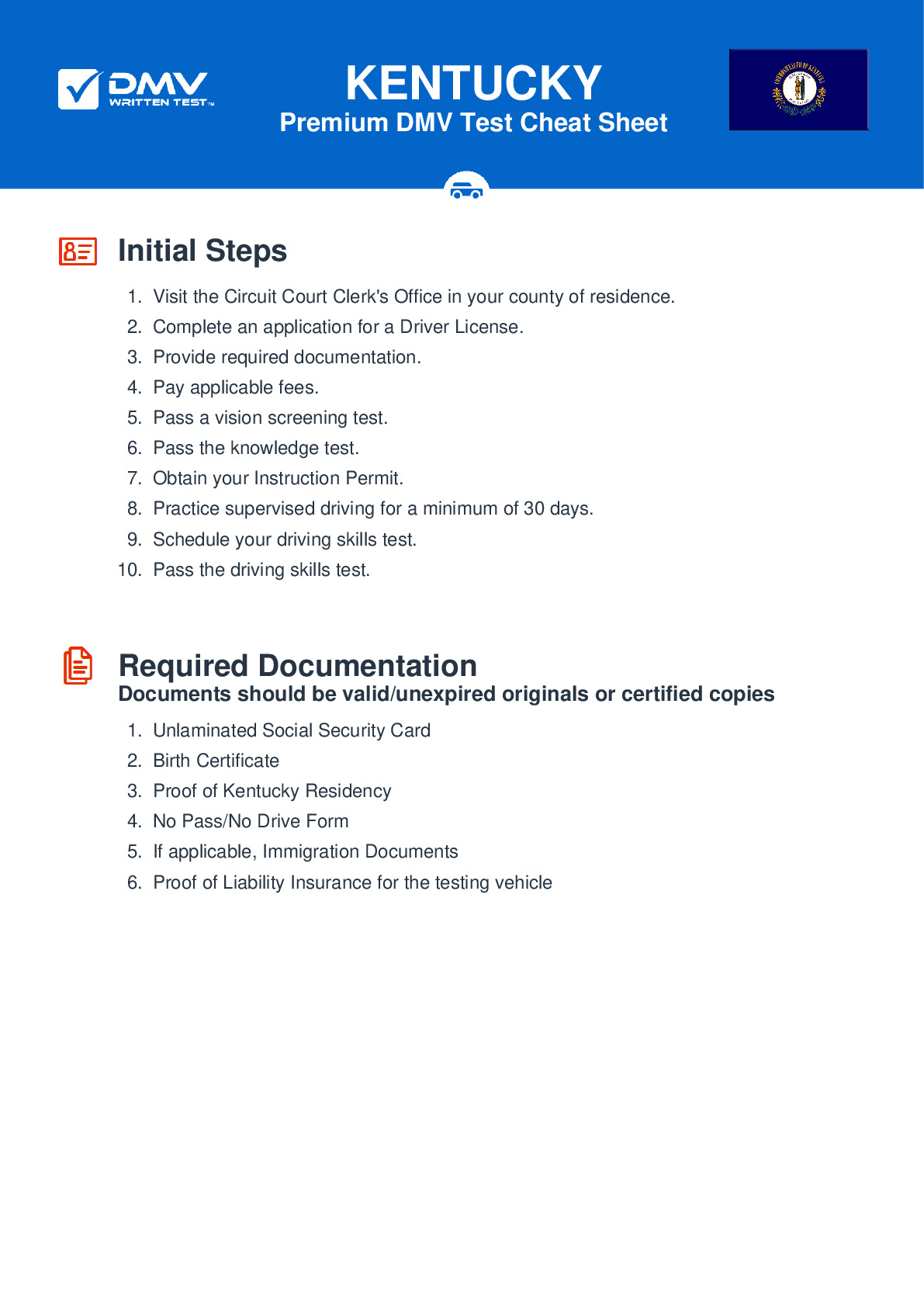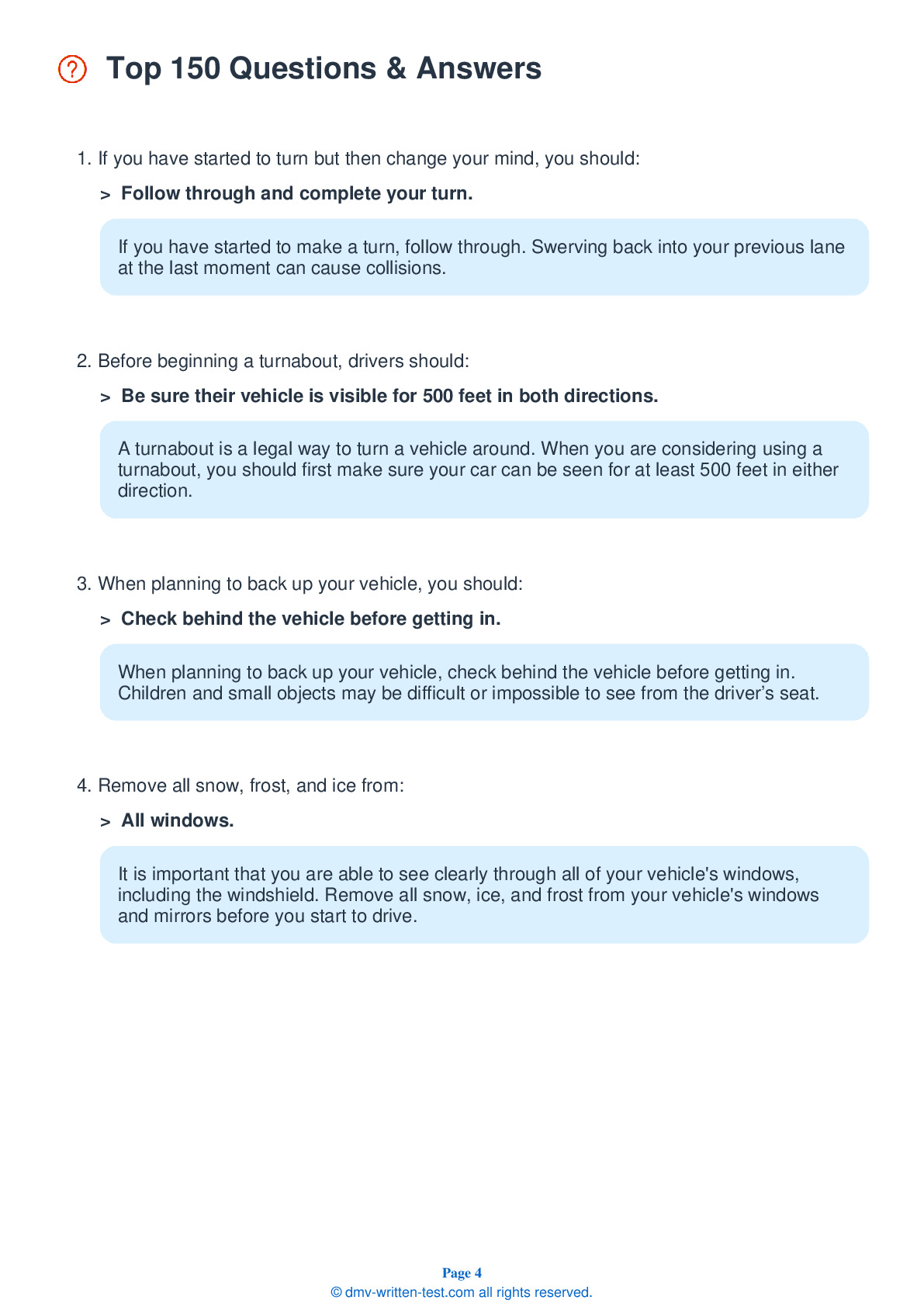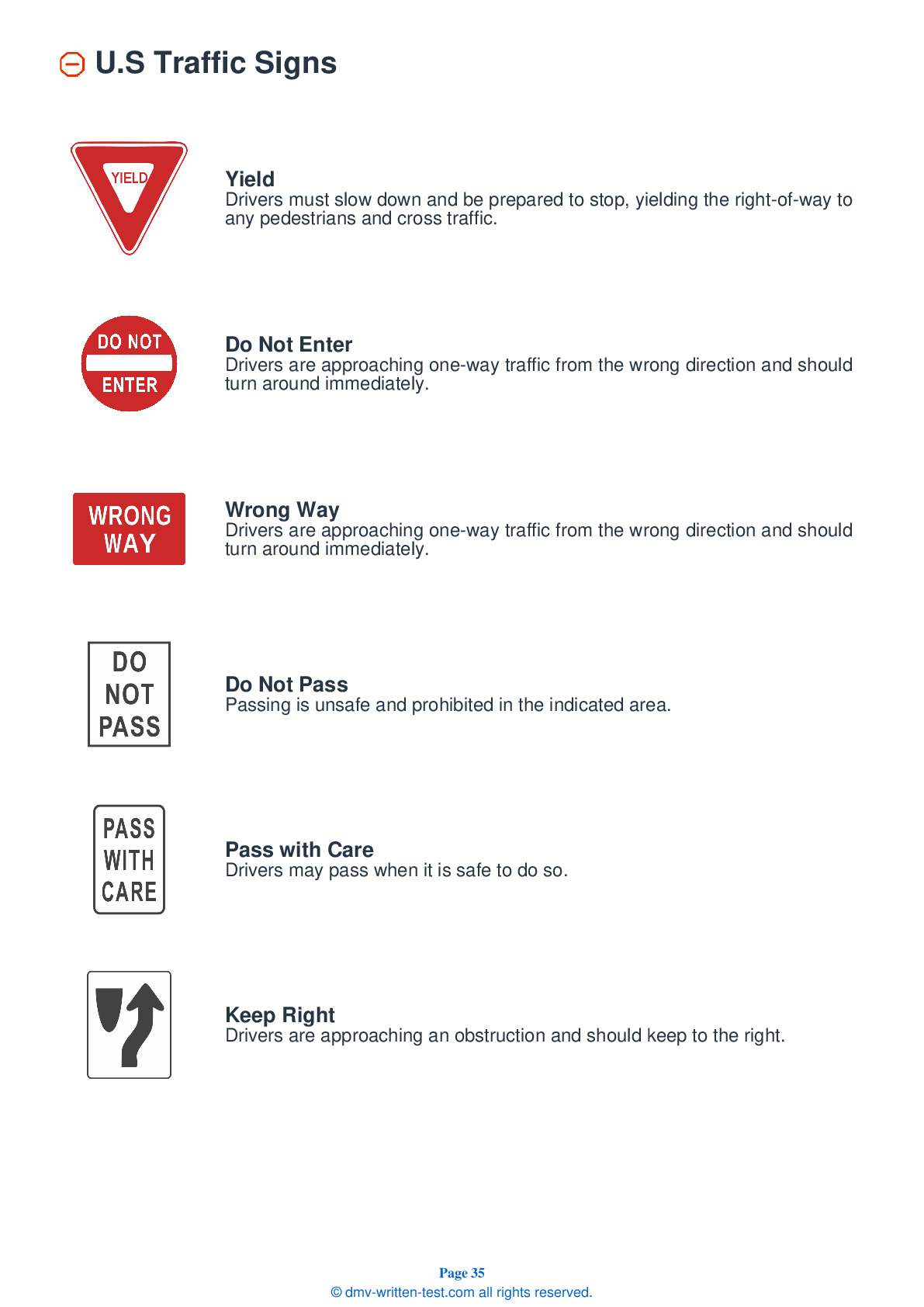2025 Kentucky Permit Test 6
The following questions are from real DMV written tests. These are some of the actual permit questions you will face in Kentucky. Each permit practice test question has three answer choices. Select one answer for each question and select "grade this section." You can find this button at the bottom of the drivers license quiz. For a complete list of questions and answers for Kentucky please visit https://cheat-sheets.dmv-written-test.com/en/kentucky/car.
Number of Tests
Number of Question
Passing Score
17. You should increase the distance between your vehicle and the vehicle ahead when you:
Explanation
When being tailgated, create extra space in front of your vehicle and do not brake suddenly. Slow down gradually or merge into another lane to prevent a collision with the tailgater.
18. Drivers turning left must yield to:
Explanation
Drivers turning left must yield to oncoming vehicles that are driving straight ahead. A turning driver may only proceed when they can safely turn without affecting oncoming traffic.
19. When driving in fog, you should:
Explanation
Drivers should use low beam headlights when driving in fog. High beams will reflect back at the driver, making it difficult to see.
20. If weather or light conditions require you to have your lights on while driving:
Explanation
Use your low beam headlights when driving in foggy, snowy, or rainy conditions. Light from high beam headlights will reflect back, causing glare and making it even more difficult to see ahead.
21. If you are being followed too closely on a multilane highway, you should:
Explanation
If you are being followed too closely on a multilane roadway, move into the lane to your right and allow the other driver to pass your vehicle. On multilane roads, the far left lane is intended for faster-moving vehicles to pass slower-moving vehicles.
22. If pedestrians are illegally crossing in the middle of the street instead of in a crosswalk, you:
Explanation
You must yield to pedestrians at all times. If the pedestrians are jaywalking or crossing the street where they should not be, you must still stop for them.
23. Work zone barriers, drums, cones, and signs are used to:
Explanation
Work zones on highways have become increasingly dangerous places for both workers and drivers. When approaching a work zone, watch for materials such as cones, barrels, signs, large vehicles, and workers in brightly colored vests to warn you and direct you.
24. Fatigue increases the risk of:
Explanation




